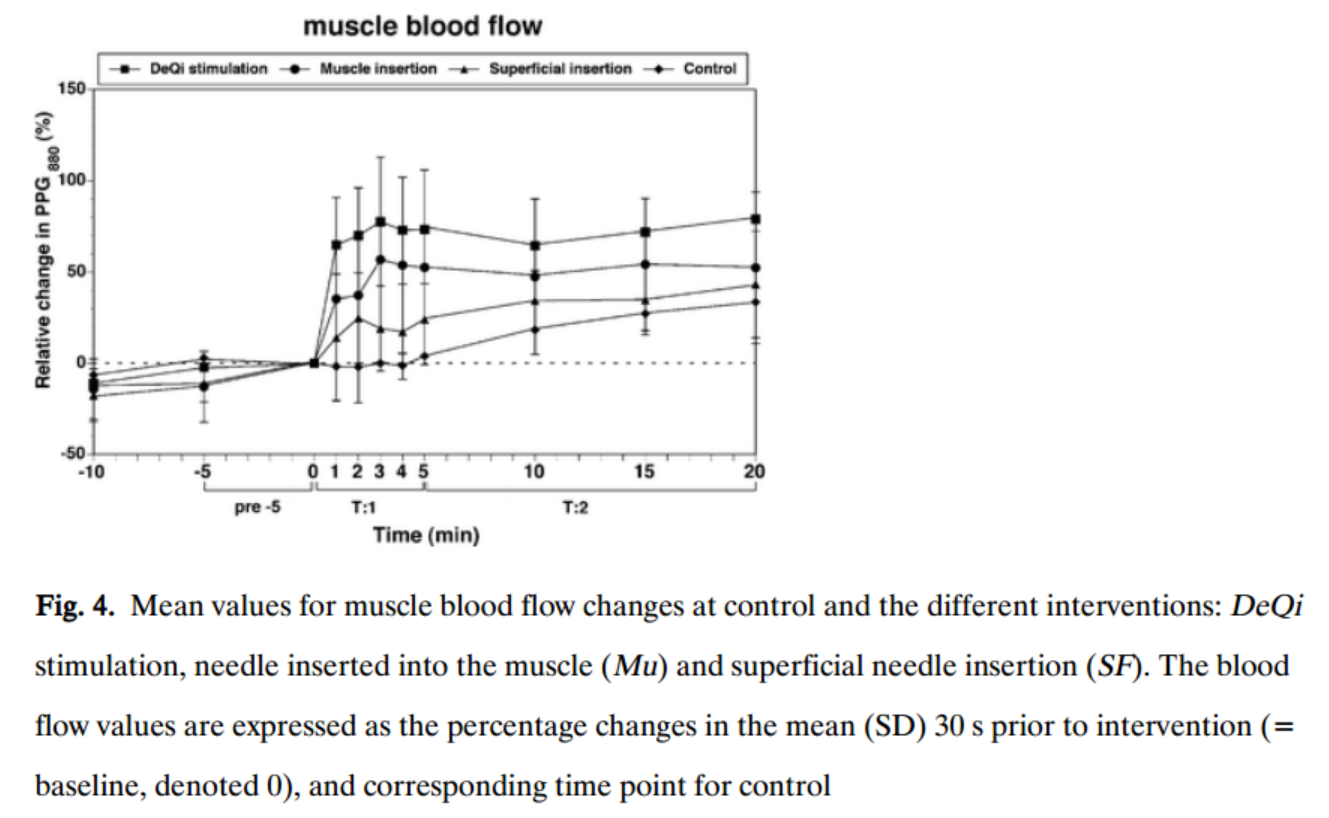In this small study of 14 healthy female subjects blood flow to skin and muscle was measured following acupuncture needle insertion: [1]
In randomised order, 2-7 days apart, three modes of needle stimulation
were performed on the anterior aspect of the tibia: superficial
insertion (SF), insertion into the anterior tibial muscle (Mu), and
insertion into the muscle including manipulation of the needle in
order to elicit a distinct sensation of distension, heaviness or
numbness (DeQi).
Blood flow in skin and muscle was measured non-invasively, increased blood flow to muscle was demonstrated:

Compared to the control situation, muscle blood flow increased
following both Mu and DeQi for 20 min, with the latter being more
pronounced for the initial 5 min. Skin blood flow increased for 5 min
following DeQi. However, no increase was found following SF.
A similar study conducted on subjects with fibromyalgia found: [2]
However, in FM patients subcutaneous needle insertion was followed by
a significant increase in both skin and muscle blood flow, in contrast
to findings in healthy subjects where no significant blood flow
increase was found following the subcutaneous needling. The different
results of subcutaneous needling between the groups (skin blood flow:
p=0.008; muscle blood flow: p=0.027) may be related to a greater
sensitivity to pain and other somatosensory input in FM.
[1] Sandberg M, Lundeberg T, Lindberg LG, Gerdle B. Effects of acupuncture on skin and muscle blood flow in healthy subjects. Eur. J. Appl. Physiol. 2003 Sep;90(1-2):114-9. doi: 10.1007/s00421-003-0825-3. PubMed PMID: 12827364.
[2] Sandberg M, Lindberg LG, Gerdle B. Peripheral effects of needle stimulation (acupuncture) on skin and muscle blood flow in fibromyalgia. Eur J Pain. 2004 Apr;8(2):163-71. doi: 10.1016/S1090-3801(03)00090-9. PubMed PMID: 14987626.

